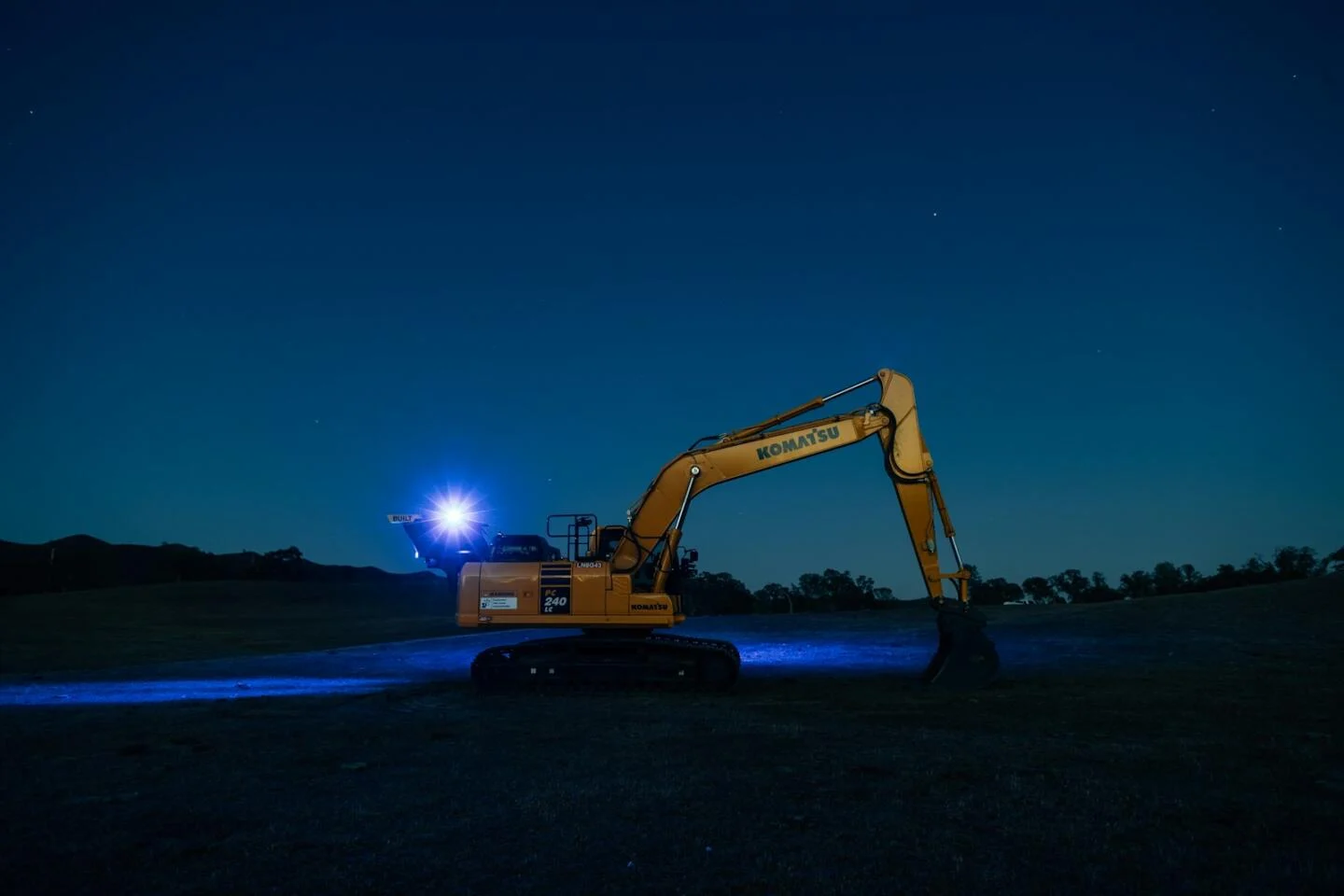
Brief History of Excavators
Excavators trace their origins back to the early 19th century. The first mechanized excavator, known as the steam shovel, was invented by the American engineer William Otis in 1835. These early machines revolutionized construction and excavation projects by replacing manual labor with mechanized digging. By the 20th century, hydraulic technology became the standard, leading to the modern hydraulic excavator: the first completely hydraulic was introduced in 1951 by the French company Poclain, revolutionizing digging efficiency, trenching, lifting, and demolition work. Since then, excavators have evolved with advanced hydraulics, electronics, automation, and GPS integration to enhance efficiency and precision.
In the late 1960s, the first compact excavator (or ‘mini-excavator’) was designed in China for use in rice fields and marketed in 1971 by the Japanese company Kubota under the name ‘Kubota Rabbit’. Another of the first mini-excavators was the ‘YNB 300’ self-propelled wheeled excavator by the Yanmar Construction Company. In the 1980s, compact excavators then spread to North America and Europe to be used in a variety of industries. In the mid-1980s, mini-excavator manufacturers included JCB, Kubota, Beresford and Manitou. The 1960s and 1980s also saw the development of the first mechatronic hydraulic excavators, in which the hydraulics were electronically controlled.
Types of Excavators
Excavators are classified based on their design, mobility, and specialized functions. Each type is suited to specific applications, ensuring efficiency and productivity in various industries. Excavators come in different designs and sizes to suit various industries. Below is a detailed breakdown of the different excavator types:
Crawler Excavators
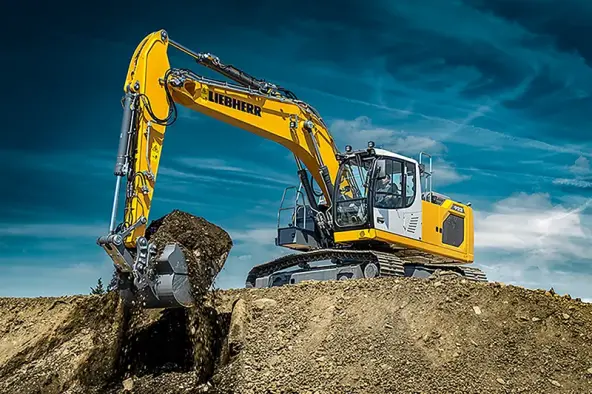
Crawler excavators are mounted on continuous tracks instead of wheels, and a rotating platform with a boom, stick, and bucket or other attachment, providing better stability and traction on uneven or rough terrain. They use hydraulic power to operate the boom, arm, and bucket and it’s primarily used for digging, lifting, and material handling tasks.
-
Key Characteristics:
- Tracked Undercarriage – Uses steel or rubber tracks (like a tank) for enhanced stability and traction on uneven, muddy, or rough terrain.
- 360° Rotating Cab – The upper structure (house) can rotate fully, allowing the operator to dig and move material without repositioning the undercarriage.
- Attachments – Can be fitted with a variety of tools, including: buckets (standard, trenching, rock), hydraulic breakers, grapples, augers, shears.
-
Typical Applications:
- Earthmoving & trenching
- Demolition
- Mining & quarrying
- Heavy lifting
- River dredging
- Pipeline installation
As jobsite demands evolve and sustainability becomes a greater concern, the future of crawler excavators will likely include hybrid and electric models, advanced automation, and more data-driven machine control systems. But at their core, these machines will continue to do what they’ve always done best: deliver strength and stability, wherever the ground gets rough.
Wheeled Excavators
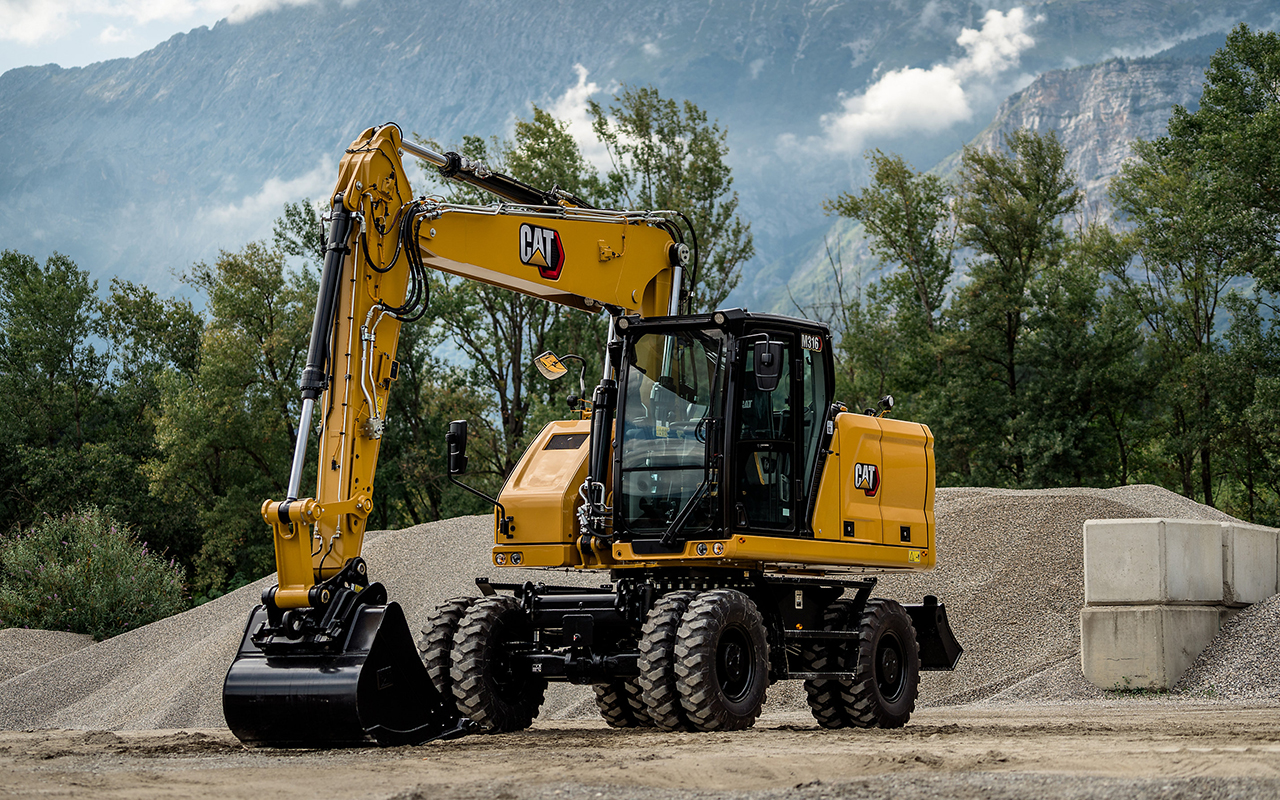
Wheeled excavators are heavy construction machines equipped with wheels instead of tracks. They are typically used in urban environments, on paved surfaces, or in situations where high mobility is a priority. They feature a rotating cab, a boom, and an arm with a bucket or other attachments. Therefore they’re also known as rubber-tired excavators or mobile excavators, and their versatility allows them to be used for digging, lifting, and material handling, similar to their tracked counterparts, but with key differences that make them suitable for specific applications.
-
Typical Applications:
- Urban Construction – Compact, maneuverable, surface-friendly.
- Roadwork – Drives between sites, ideal for trenching and utilities.
- Utility Installation – Fast setup, minimal disruption in public zones.
- Municipal Work – Used for maintenance, cleanup, light excavation.
- Railway & Industrial Use – Suitable for flat, paved environments.
-
Key Characteristics:
- Mobility – Road-travel capable (up to ~35 km/h), no trailer needed
- Surface Compatibility – No damage to asphalt or concrete
- Stabilizers – Outriggers/blade for digging stability
- Boom Options – One-piece or articulated for flexible reach
- Attachment Ready – Supports buckets, breakers, tiltrotators, etc.
- Operator Cab – High visibility, comfort, and road-compliant features
- Ground Suitability – Best on hard, flat surfaces
- Main Limitation – Less stable on rough terrain vs. crawlers
Mini (Compact) Excavators
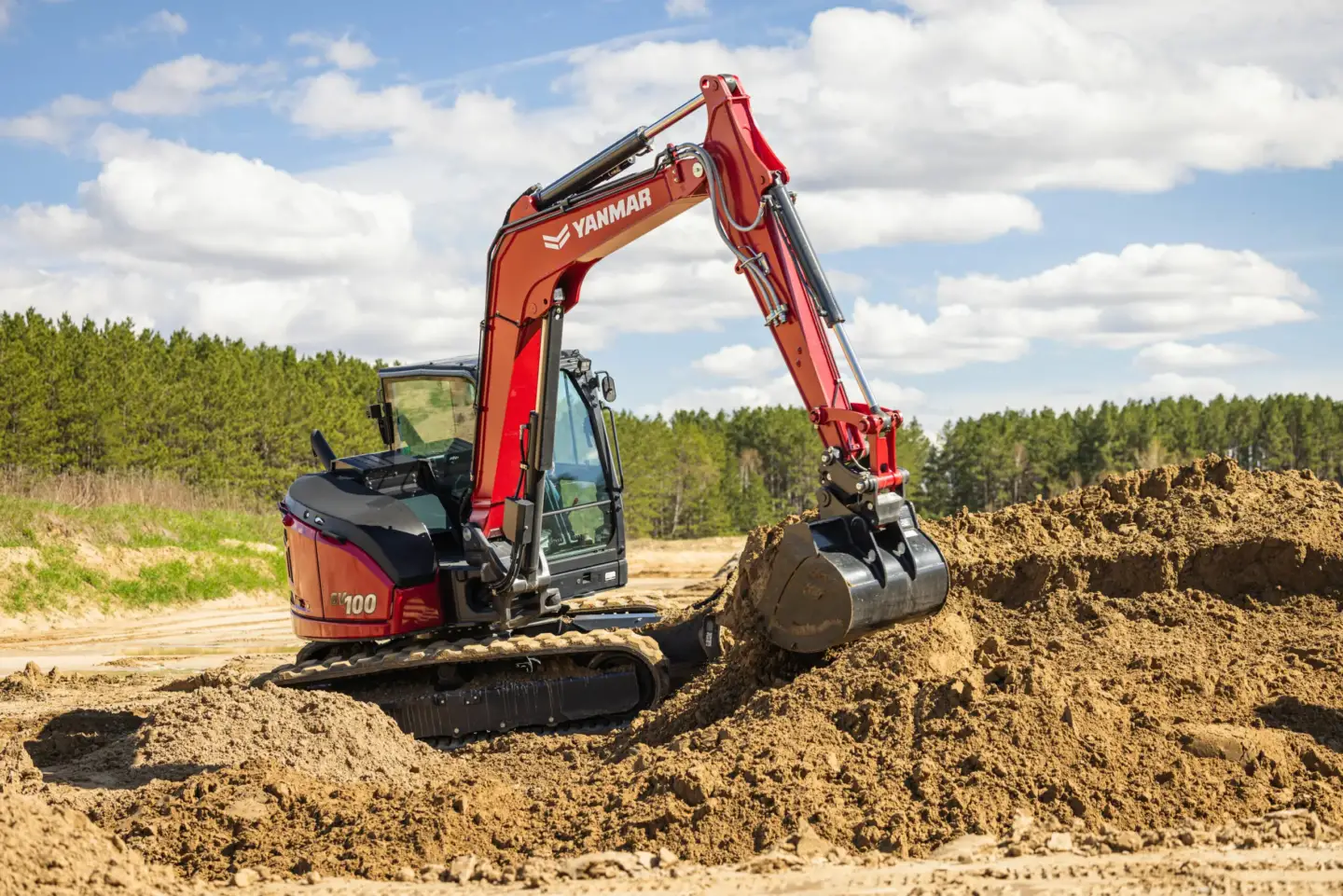
Compact excavators, also known as mini excavators, are small, lightweight machines typically under 6–8 tons. They offer excellent maneuverability and lower ground impact, making them ideal for confined spaces, light construction work, and urban environments.
-
Key Characteristics:
- Compact footprint – Ideal for tight job sites
- Low ground pressure – Minimal surface damage
- Transportable – Fits on trailers for quick relocation
- Lower operating cost – Reduced fuel, maintenance, and labor
- Ease of use – Simplified controls, lower skill threshold
- High ROI in rental fleets – Quick payback and high utilization rates
- Typical Applications
- Urban construction & renovations
- Landscaping & garden design
- Utility installations (water, gas, fiber)
- Agriculture & forestry
- Cemetery & municipal works
- Light demolition
- Rental fleet operations
Long-Reach Excavators
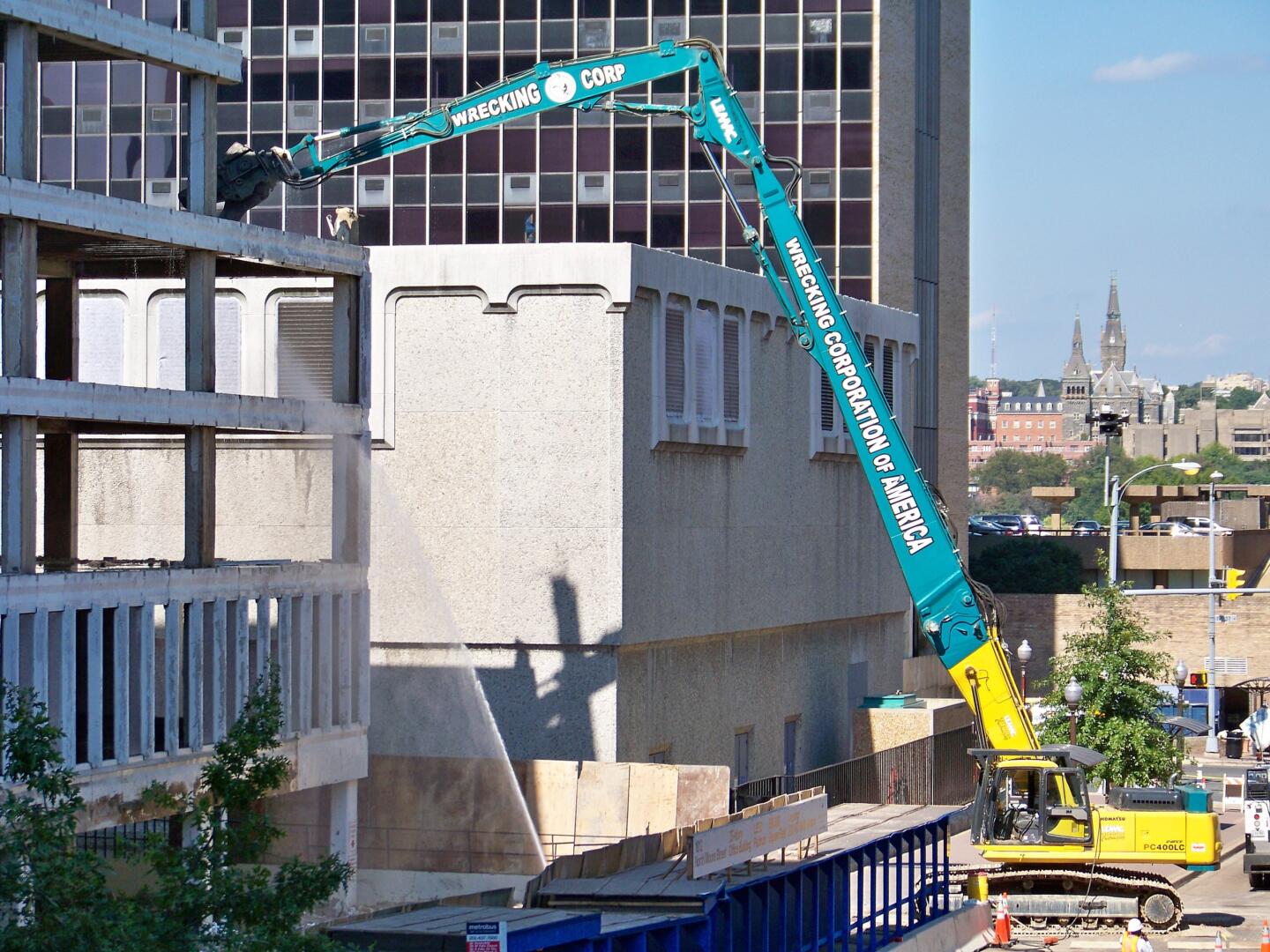
Designed with an extended boom and arm, these excavators can reach further distances than standard models, often used in specialized applications since it is designed primarily for applications requiring reach over depth or force; these excavators excel in demolition, dredging, and slope work. Actually it is an evolution of a conventional hydraulic excavator, but engineered to work safely and effectively from a distance without losing of efficacy.
-
Key Characteristics:
- Extended Boom and Arm – Some models can reach up to 30 meters (100 feet) from the base of the machine.
- Lower Digging Force (Compared to Standard Excavators) – mechanical leverage is reduced.
- Stability Modifications –In some cases, wider tracks or hydraulic stabilizers are included.
-
Attachments – Buckets, Demolition tools, Clamshell buckets (for dredging), Tiltrotators and grading beams.
-
Typical Applications:
- Selective Demolition – Safely dismantling tall or unstable structures from a distance.
- Dredging and Waterway Maintenance – Removing sediment or debris from rivers, lakes, canals, and reservoirs.
- Slope Grading and Embankment Work – Cutting, grading, or stabilizing long slopes, levees, and embankments.
- Industrial Pond and Lagoon Cleaning – Excavating contaminated or sediment-filled ponds in plants, refineries, or mines.
- Bridge and Roadside Excavation – Excavating beneath or around bridges, retaining walls, and highways.
- High-Reach Deconstruction (UHD Variants) – Taking down tall buildings or structures floor by floor using specialized attachments.
- Barge and Vessel Loading/Unloading – Transferring bulk materials between barges, ships, and land stockpiles.
- Contaminated Site Remediation – Excavating hazardous waste or soil in sensitive areas (e.g., landfills, brownfields).
- Vegetation and Riverbank Clearing – Removing overgrowth, debris, or trees along rivers, highways, or canals.
Dragline Excavators
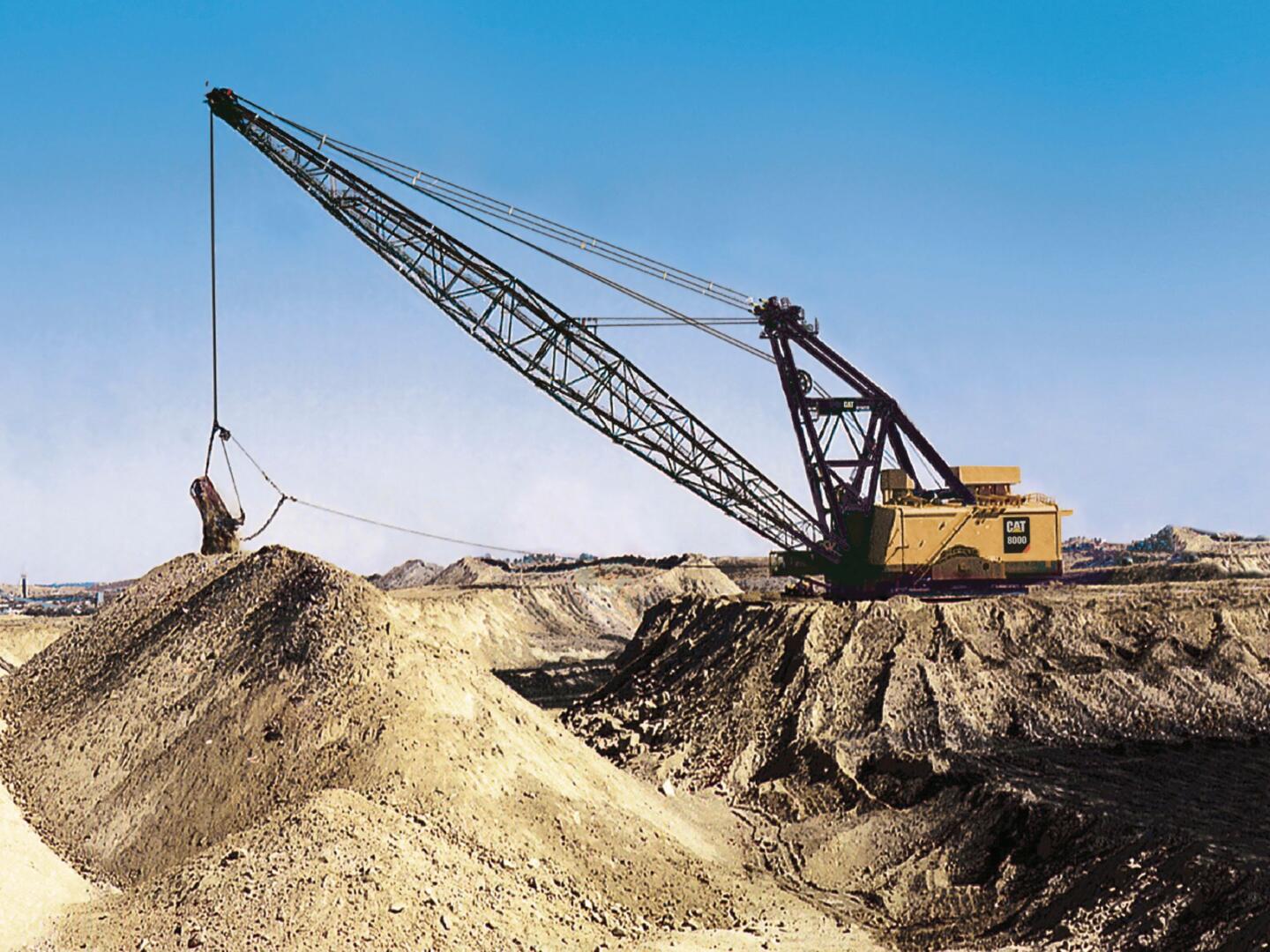
A dragline excavator is a large, cable-operated excavating machine used for digging and removing material using a drag bucket suspended from a long boom. Unlike hydraulic excavators, draglines rely on a system of hoist and drag cables to move the bucket horizontally and vertically, allowing them to dig deep trenches or move large quantities of material. They are among the largest earthmoving machines in existence.
They are primarily used in surface mining, large-scale civil works, and underwater excavation, where reach and capacity are more critical than precision.
-
Key Characteristics:
- Operating Mechanism – Cable-operated system (hoist + drag cable)
- Boom Length – Up to 100+ meters (especially in mining applications)
- Bucket Capacity – Ranges from 10 to over 100 cubic meters
- Mobility – Usually mounted on walking feet or large crawlers; very slow movemeny
- Power Source – Electric-powered in mining; diesel used in smaller units
- Excavation Method – Material is “dragged” toward the machine rather than pushed or lifted directly
- Size – Some of the largest mobile equipment ever built (e.g. Bucyrus 2570WS, Big Muskie)
-
Typical Applications:
- Surface Mining (Coal, Sand, Phosphate) – Removing overburden (the layer of soil and rock covering valuable mineral deposits).
- Marine and Underwater Excavation – Dredging harbors, rivers, canals, and reservoirs.
- Large-Scale Earthmoving in Infrastructure Projects -Dam construction, canal digging, and levee building.
- Quarrying and Aggregate Extraction – Extracting sand or gravel from below water table in quarries.
Suction (Vacuum) Excavators
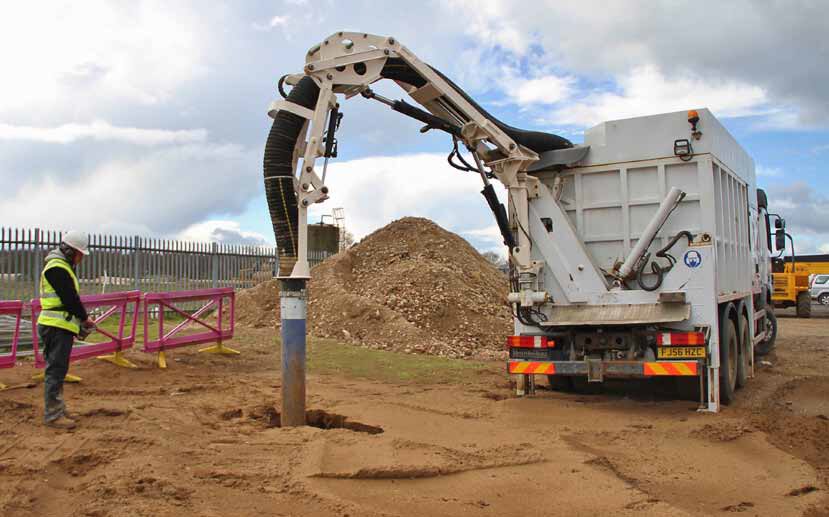
Vacuum excavation, also known as “soft dig,” is a non-destructive excavation method that uses air or water to loosen soil before extracting it with a powerful vacuum. Depending on the medium used, it is classified as air or hydro excavation. The loosened material is then collected in a debris tank; dry soil can be reused as backfill, while wet spoil from hydro excavation typically cannot be reused.
This technique significantly reduces the risks associated with manual digging and mechanical excavation, such as trench cave-ins or damage to underground utilities. It keeps workers safer by minimizing ground disturbance and allowing operations to be performed from the surface. Hydro excavation is especially effective in frozen ground, where heated water can thaw and dislodge soil.
-
Key Characteristics:
- Excavation Method – Uses high-pressure air or water to loosen soil, then vacuums it out.
- Medium Used – Air (pneumatic) or water (hydro excavation).
- Spoil Collection – Material is stored in a sealed debris tank for disposal or reuse (dry only).
- Excavation Precision – High accuracy with minimal surface disruption
- Mobility Truck-mounted or trailer-mounted for easy site transport
- Power Source Typically diesel-powered systems for vacuum and jetting
- Safety Advantage Non-mechanical, reducing risk of damaging underground assets
-
Typical Applications:
- Utility Exposure (Potholing/Daylighting) – Locating and exposing underground utilities without damaging them.
- Trenchless Construction Support – Supporting horizontal directional drilling (HDD) by clearing or cleaning bore pits.
- Municipal Infrastructure Maintenance – Cleaning stormwater drains, catch basins, culverts, and sewer systems.
- Road and Rail Work – Excavating in tight urban environments or along live railways where traditional machines can’t be used.
- Tree Root and Landscaping Work – Soil removal around tree roots without cutting or damaging them.
- Emergency Spill or Debris Removal – Clearing hazardous or contaminated material from sensitive areas.
Amphibious Excavators

Amphibious excavators are specially designed machines capable of operating in wetlands: swampy or underwater environments, shallow water, and soft terrain conditions where standard excavators would sink or lose stability. They are equipped with sealed, pontoon-style undercarriages that provide buoyancy and enable movement across swamps, marshes, riversides, and flooded areas for flotation while operating.
They maintain the upper structure and boom configurations of conventional excavators but are optimized for low ground pressure and semi-aquatic mobility.
-
Key Characteristics:
- Undercarriage – Dual or triple sealed pontoons with tracks (steel or reinforced rubber) for flotation and traction.
- Mobility – Amphibious (land + shallow water); often self-propelled or assisted by spuds for anchoring.
- Stability – Low ground pressure with extended footprint for working on soft or saturated ground.
- Attachment – Compatibility Supports buckets, clamshells, cutters, dredge pumps, and long-reach arms.
- Customization – Can be fitted with side pontoons, spud legs, or hydraulic winches for enhanced stability.
- Transport – Requires disassembly or floatation logistics due to size and weight.
-
Typical Applications:
- Dredging in Shallow Waters – Cleaning rivers, canals, lagoons, and ponds with minimal environmental impact.
- Wetland and Marshland Excavation – Reclaiming land or creating water channels in swamps and flood zones.
- Flood Control & Waterway Maintenance – Deepening waterways, reinforcing banks, or removing sediment in flood-prone areas.
- Environmental Remediation – Excavating contaminated sediments from wetlands or biosensitive areas.
- Pipeline and Utility Work in Flooded Terrain – Installing or repairing pipelines in wetlands, river crossings, or tidal flats.
- Mangrove and Coastal Zone Management – Habitat restoration, debris clearing, and erosion control.
Bucket-Wheel Excavators
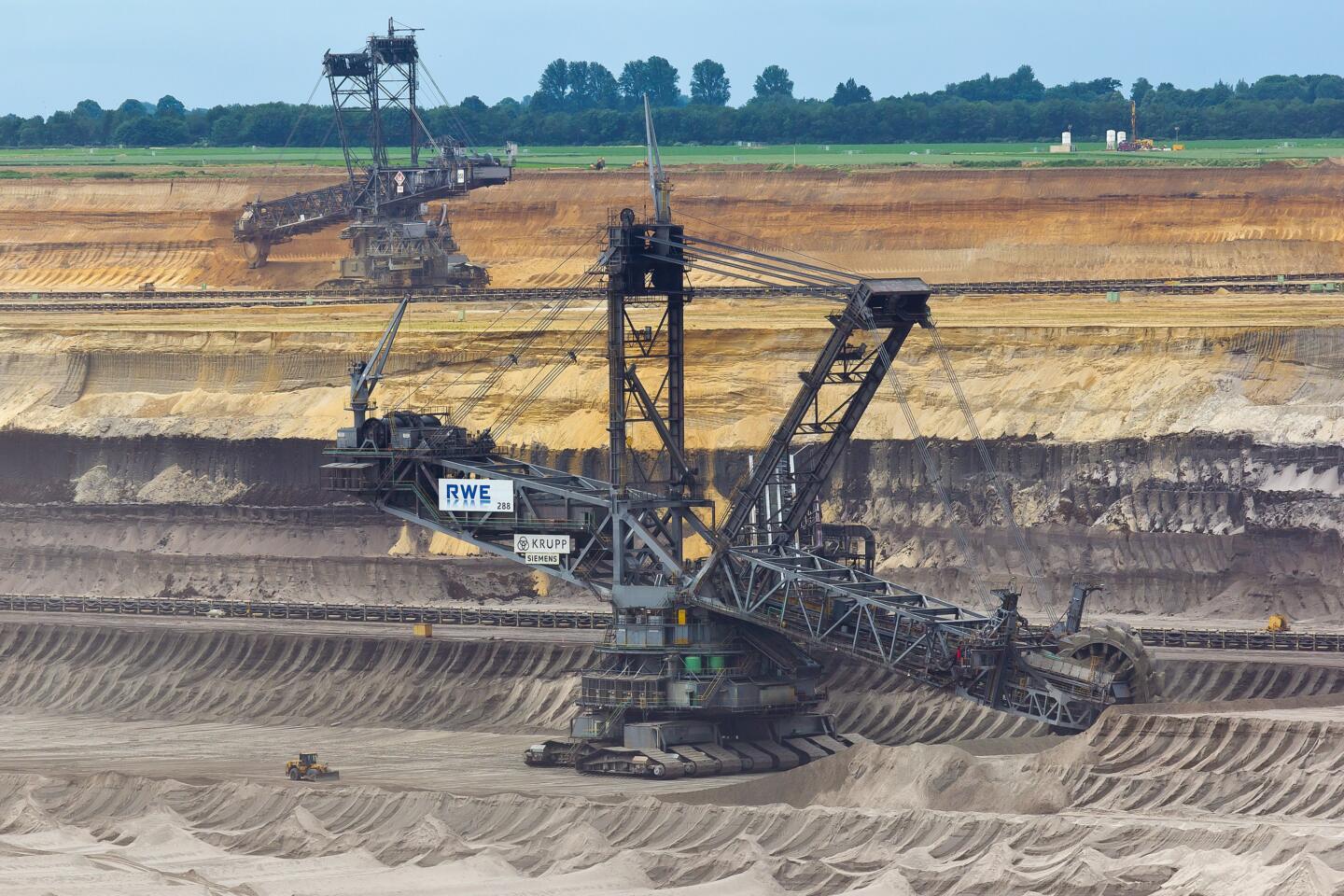
Bucket-Wheel Excavators (BWEs) are massive continuous surface digging machines used primarily in mining and for large-scale overburden removal (earthmoving projects) and material extraction. They feature a massive rotating wheel fitted with multiple buckets that continuously scoop material, as the machine advances, and transfers it via conveyor belts. Unlike conventional excavators, BWEs operate on a continuous excavation system and are among the largest land-based machines ever built.
They are predominantly used in open-pit mining operations for extracting materials such as coal, lignite, clay, and soft rock.
-
Key Characteristics:
- Excavation System – Continuous, rotary bucket wheel with multiple buckets.
- Size & Scale – Massive machines some over 200 meters long and 100 meters tall.
- Mobility – Mounted on crawlers or rail systems; capable of moving while excavating.
- Material Handling – Integrated conveyor belts for uninterrupted material transfer to haul systems.
- Output Capacity – Can exceed 200,000 m³/day depending on machine class.
- Operator Control – Controlled from cabins or remotely; often part of a larger automated system.
- Power Source – Typically electrically powered due to high energy demands.
- Automation – Often integrated into advanced fleet management and automation systems in modern mines.
-
Typical Applications:
- Open-Pit Mining (Lignite, Coal, Clay, Phosphate) – Large-scale removal of overburden and bulk material in surface mines.
- Continuous Overburden Removal – Used in conjunction with spreaders and conveyors for non-stop stripping operations.
- Bulk Material Excavation in Soft Rock – Suitable for excavating large volumes of soft, non-abrasive materials.
- Lignite and Brown Coal Extraction – Most widely used in lignite mining, especially in Europe (Germany, Poland).
- Massive Earthmoving Projects – Occasionally used in large-scale civil works or land reclamation projects requiring continuous excavation.
Walking (Spider) Excavators
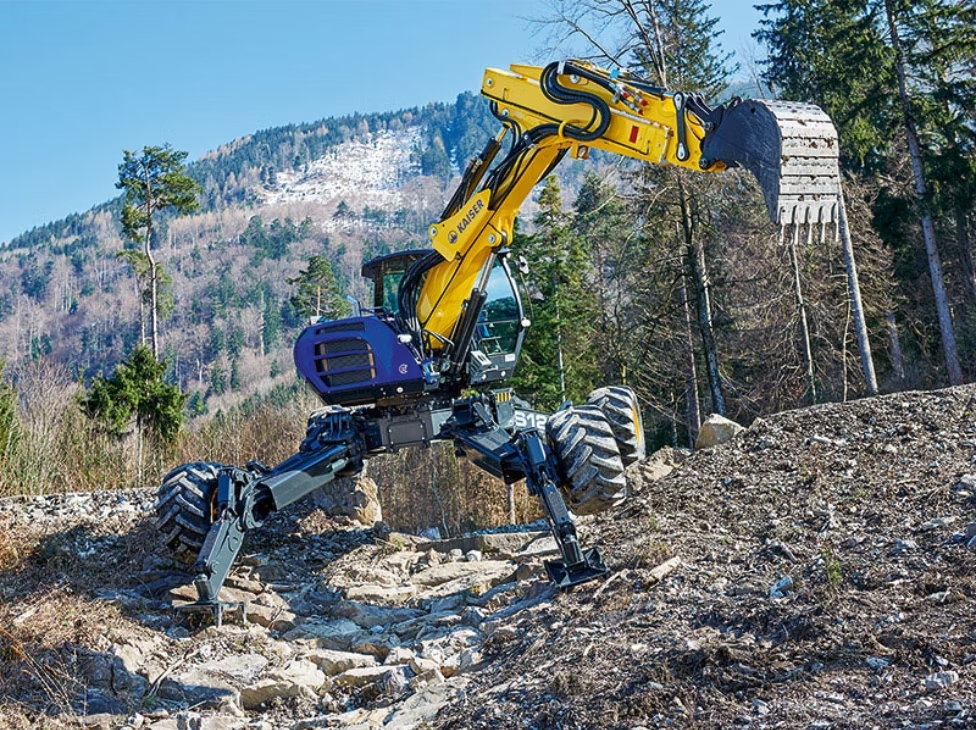
Walking excavators, also known as spider excavators, are highly versatile, all-terrain machines designed to operate in steep, uneven, or unstable environments where conventional tracked or wheeled excavators cannot function. Instead of tracks or wheels, they use adjustable legs (often with wheels or pads) that allow them to “walk” or stabilize themselves on extreme slopes, riverbanks, forests, or mountainous terrain.
Their lightweight construction, flexible mobility, and advanced hydraulic systems make them ideal for challenging, low-access sites.
-
Key Characteristics:
- Mobility System – Independent, adjustable legs (with wheels or pads); can “walk,” climb, and level itself.
- Terrain Adaptability – Operates on slopes up to 70%, across rivers, rubble, and mountainous terrain.
- Weight Class – Typically 9–12 tons (varies by model and application).
- Boom Configuration Multi-articulated boom, often long-reach with tilt and rotator options.
- Hydraulic System High-capacity hydraulics for precise control on uneven ground.
- Transportability – Compact enough to be airlifted, trailered, or lowered by crane in remote areas.
- Control – Operator cabin with full 360° view; sometimes joystick remote control is available.
- Customization – Can be equipped with winches, grabs, saws, drills, and tiltrotators.
-
Typical Applications:
- Forestry and Mountain Excavation – Road building, stump removal, and slope stabilization in alpine or forested terrain.
- Hydraulic and River Work – Riverbank reinforcement, ditch cleaning, culvert excavation, and dam maintenance.
- Municipal and Civil Engineering in Difficult Terrain -Working on steep embankments, landslides, or remote access sites.
- Disaster Recovery and Emergency Access – Clearing debris or restoring infrastructure in areas inaccessible to other equipment.
- Pipeline and Cable Installation – In mountainous or uneven areas where trenchers or traditional excavators cannot operate.
- Specialized Urban Jobs – Navigating stairs, retaining walls, and confined zones during renovations or public works.
Main Models from Leading Manufacturers
Several global manufacturers produce high-performance excavators. Some of the most well-known models include:
- Caterpillar (CAT) – CAT 320, CAT 336, CAT 6015B
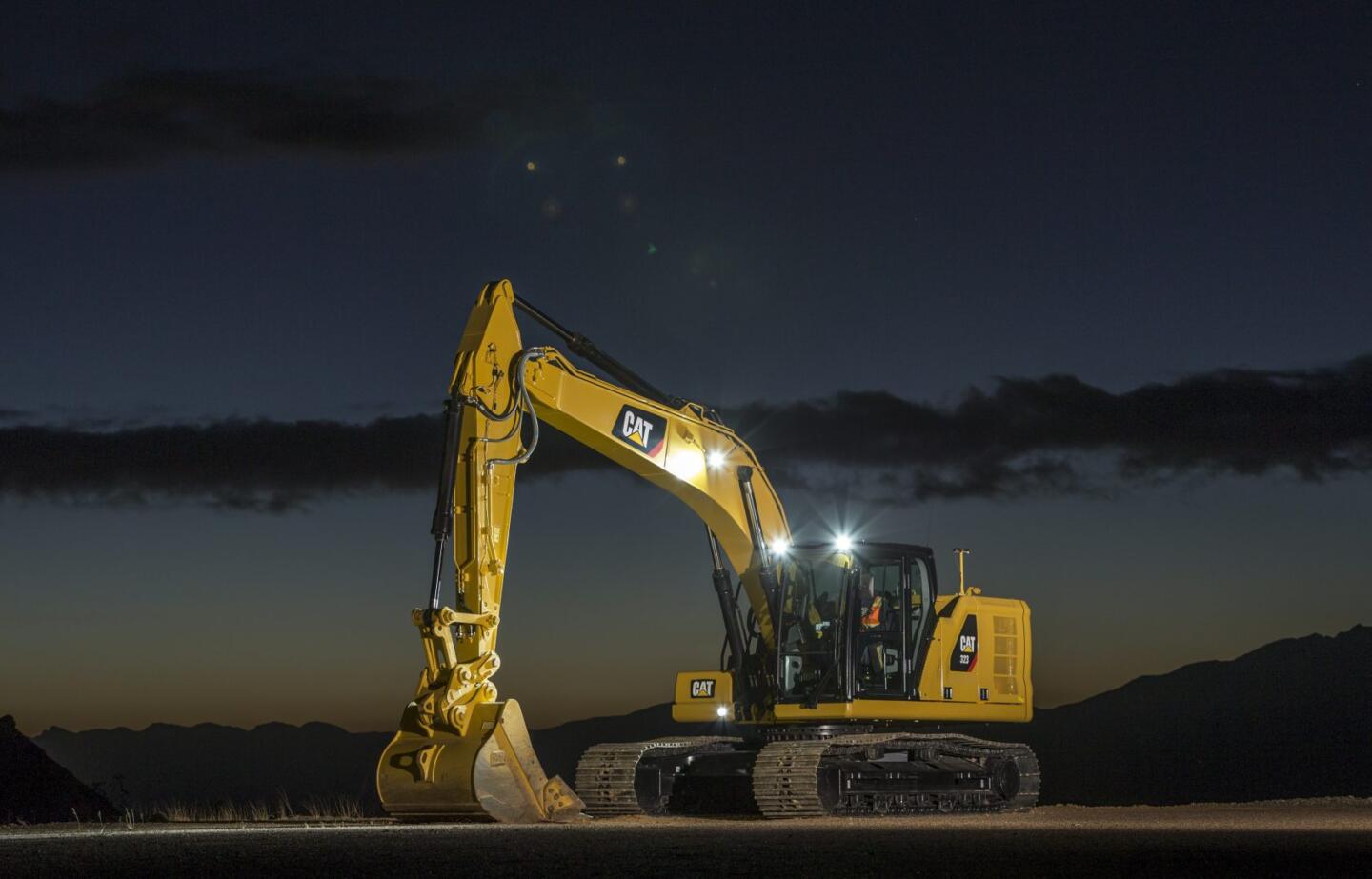
- Komatsu – PC200-8, PC360LC-11, PC8000-6
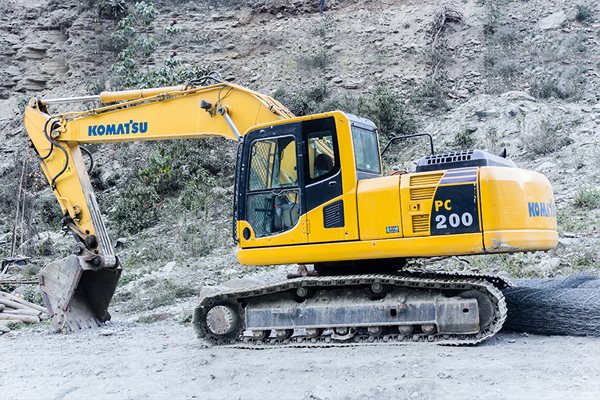
- Hitachi – ZX210LC-6, ZX350LC-5, EX8000-7

- Volvo – EC220E, EC480E, EC950F
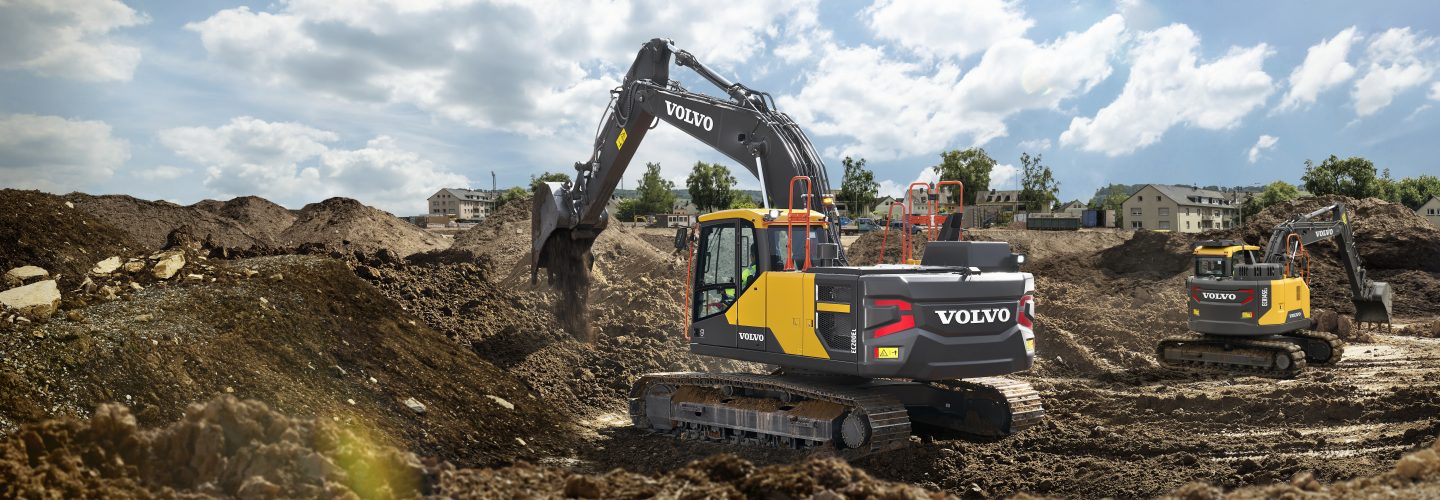
- Liebherr – R 960, R 9800
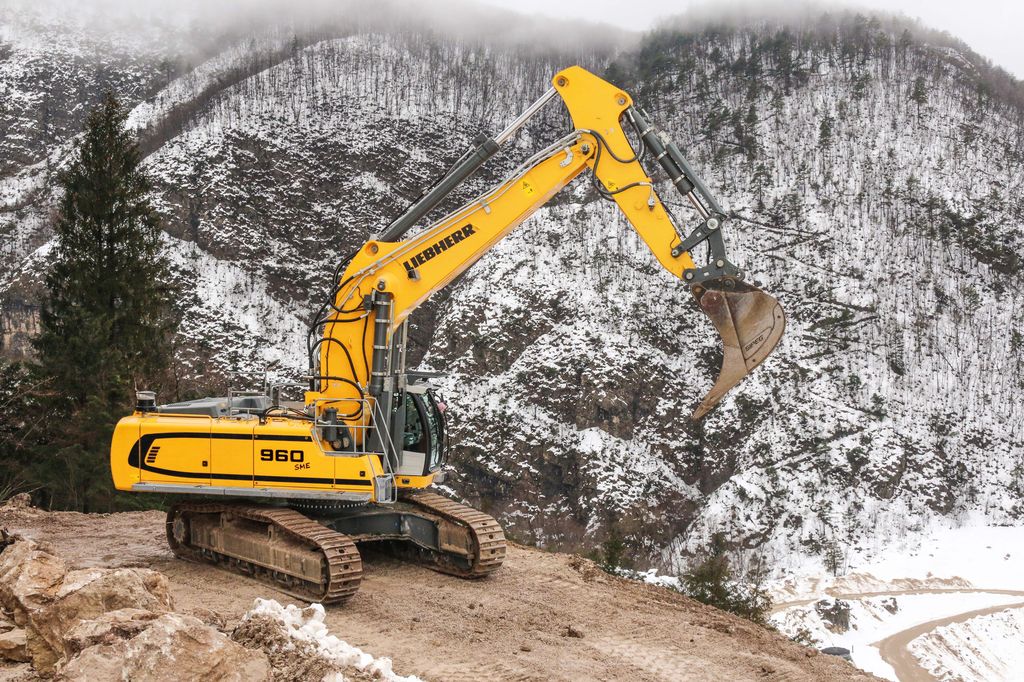
- Doosan (Develon) – DX140LCR-5, DX530LC-7
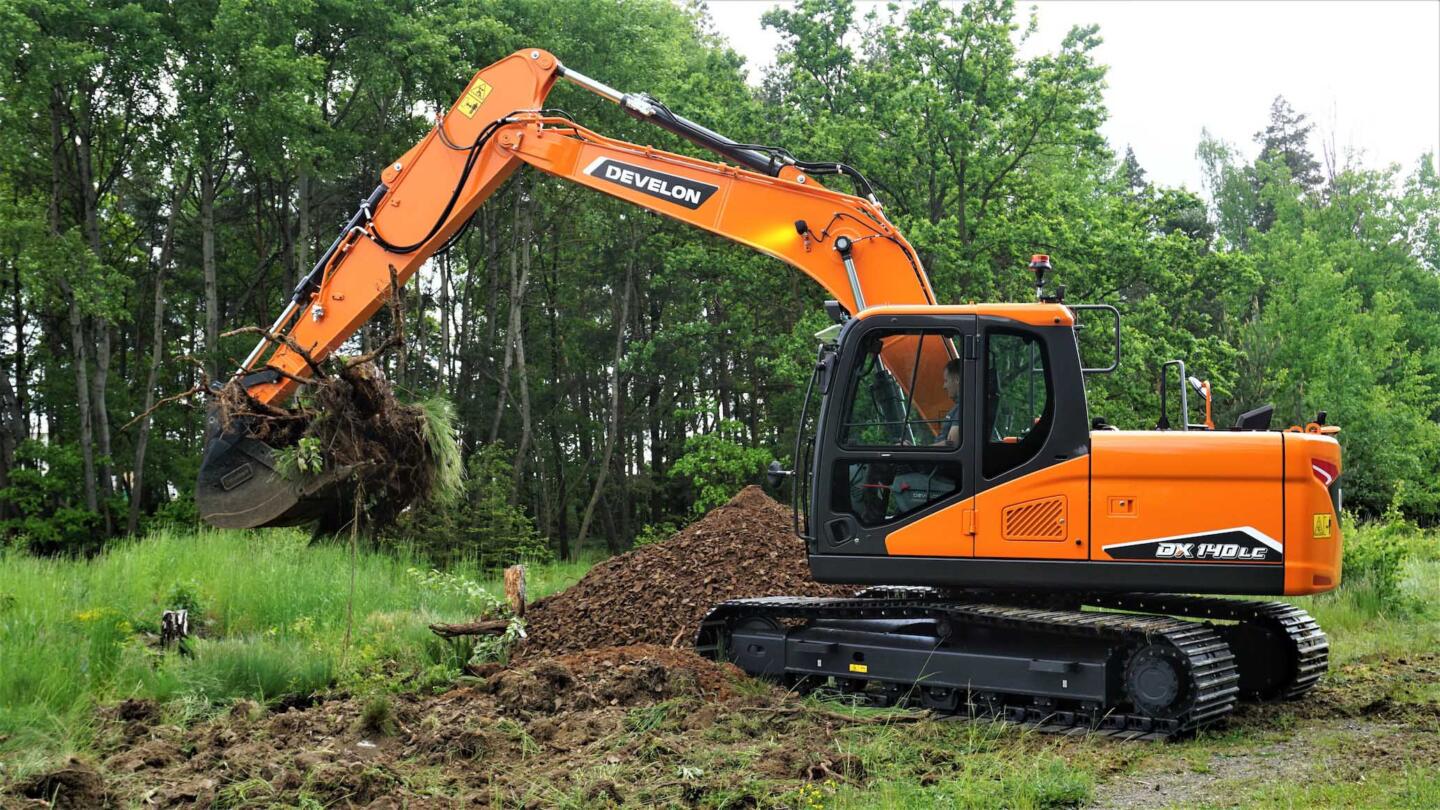
- John Deere – 35G, 350G LC, 870G LC

- Kobelco – SK210LC, SK850LC
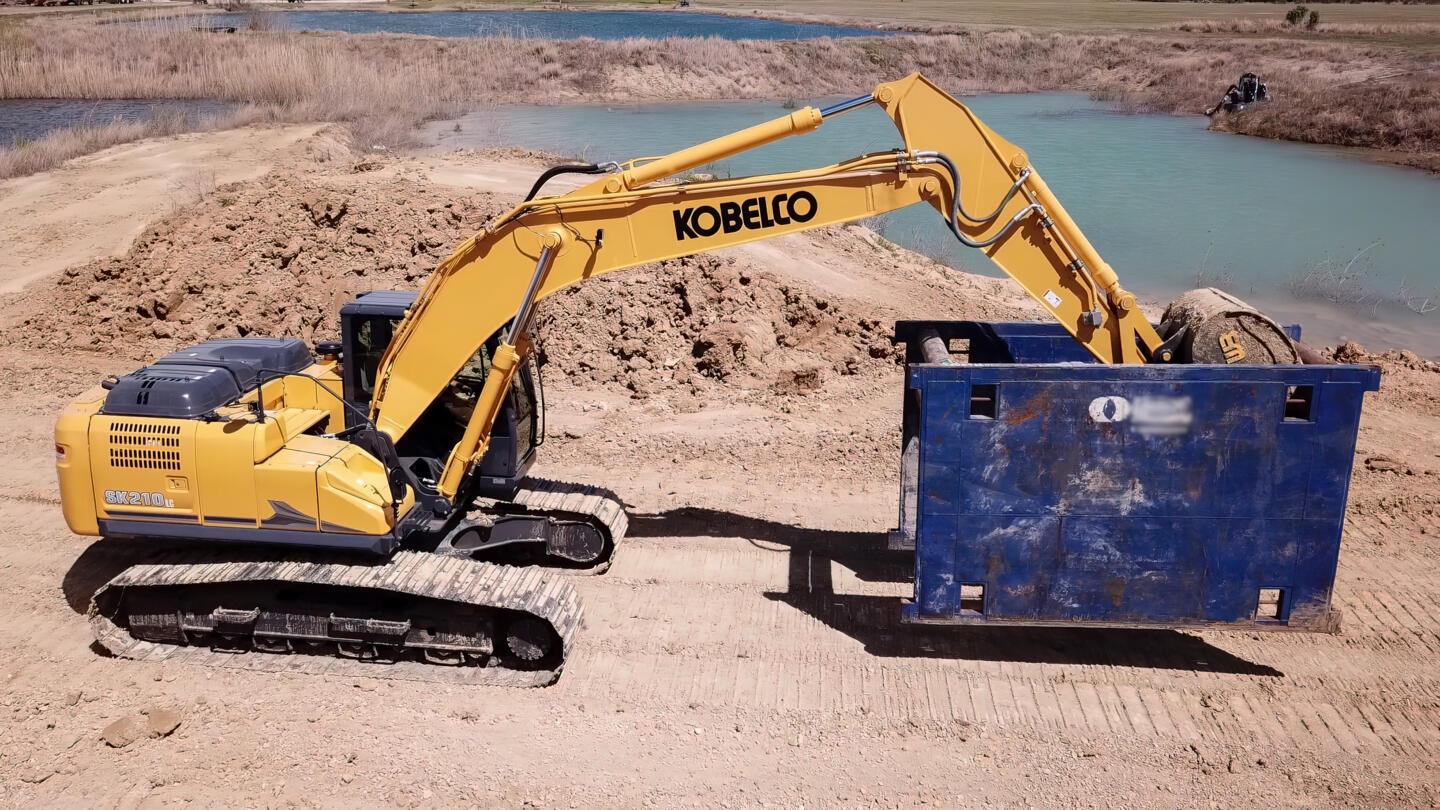
- JCB – JCB 220X, JCB 245XR
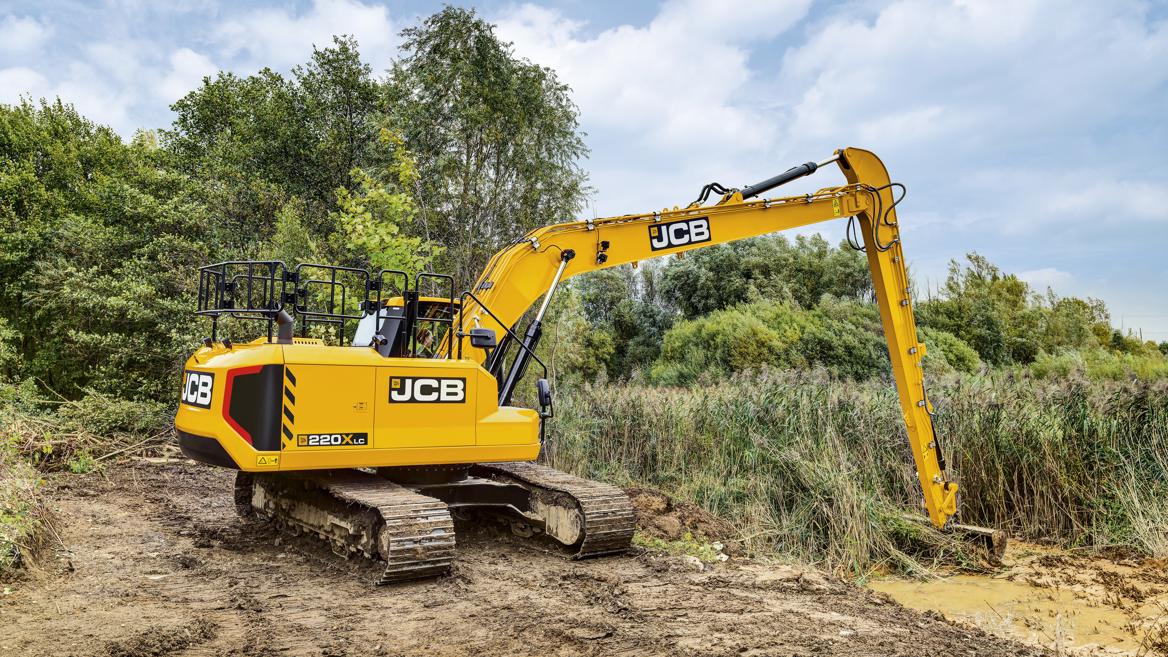
These models vary in size, horsepower, bucket capacity, and intended applications.
Main Uses of Excavators
Excavators are versatile machines used across multiple industries. Their primary applications include:
- Construction – Digging foundations, site grading, and earthmoving.
- Mining & Quarrying – Extracting minerals, coal, and aggregates.
- Demolition – Dismantling structures and crushing concrete.
- Forestry & Land Clearing – Removing trees and preparing land for development.
- Dredging & Waterway Maintenance – Excavating riverbeds, canals, and ports.
- Road & Infrastructure Projects – Digging trenches, laying pipelines, and constructing highways.
- Agriculture – Land reclamation, drainage, and irrigation projects.
- Disaster Relief – Clearing debris after natural disasters such as earthquakes and floods.
Each type of excavator is engineered for specific conditions and industries. Choosing the right excavator depends on factors such as terrain, project size, mobility needs, and required digging depth. The advancement of automation, GPS guidance, and hybrid-electric models continues to improve efficiency and reduce environmental impact across various sectors.
In summary
From compact models designed for urban job sites to massive bucket-wheel excavators used in large-scale mining, excavators come in a wide range of types—each engineered for specific tasks, terrains, and industries. Whether it’s the precision of suction excavators, the reach of long-reach and amphibious units, or the adaptability of walking excavators, choosing the right machine is critical to maximizing efficiency, safety, and operational success. Understanding the strengths and applications of each type allows contractors, project planners, and fleet managers to make informed decisions tailored to the demands of modern earthmoving and infrastructure development.


 Copyright 2017-2025 All rights reserved.
Copyright 2017-2025 All rights reserved.